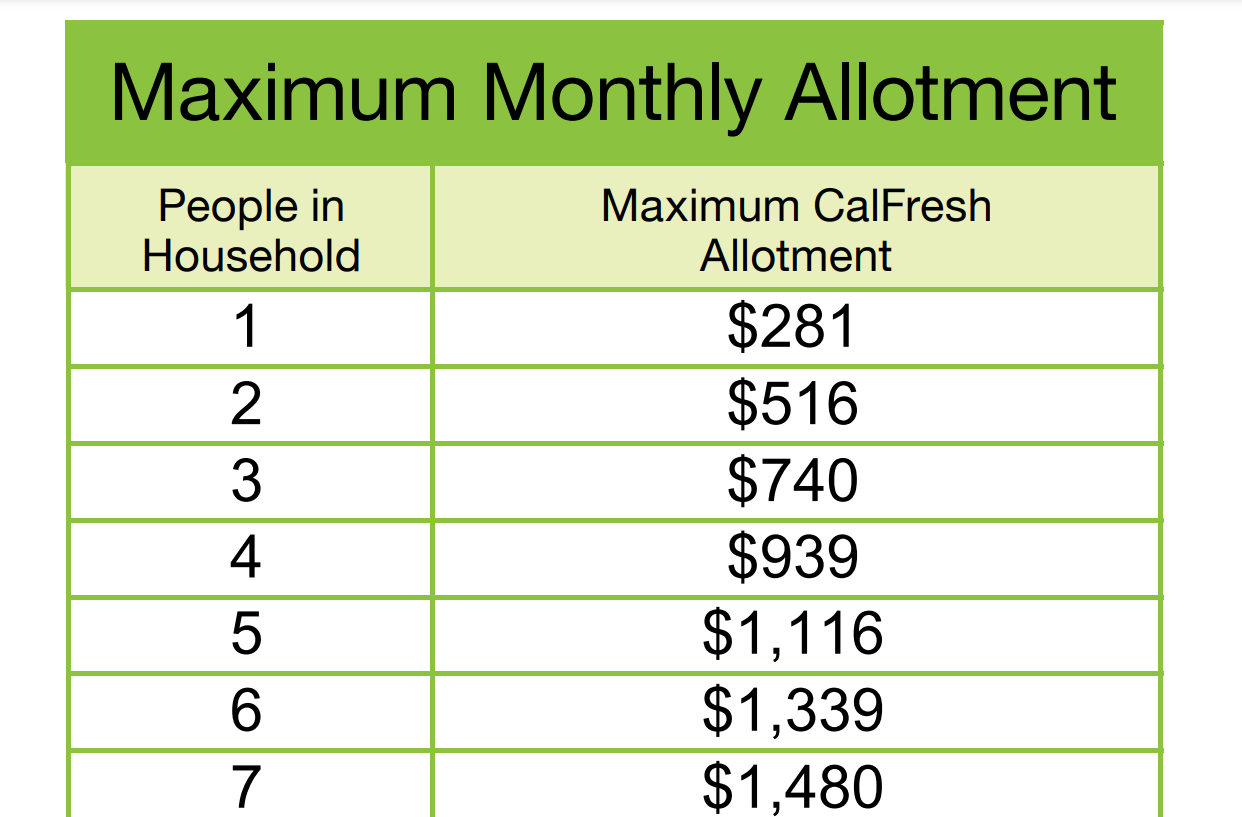This story was updated at 1:40 p.m., Thursday, April 6.
- Jump straight to: Where to find additional money and food support if your CalFresh benefits are dropping
Over 3 million households around California use CalFresh, the state’s version of the federal Supplemental Nutrition Assistance Program (SNAP), the food benefits program also known as “food stamps.” According to the state’s most recent data from January 2023, that’s more than 5 million people using these funds to ensure they have access to food.
During the pandemic, folks using CalFresh have been receiving extra funds, called “emergency allotments,” in recognition of the extreme challenges the COVID pandemic has been causing to people’s lives and jobs. This increase was at least $95 in CalFresh benefits per month.
But starting in April, CalFresh users will notice a big drop in their food benefits. That’s because those extra CalFresh pandemic funds were discontinued on Feb. 28, making March the last month the emergency allotments will appear in your CalFresh benefits.
Keep reading to find out why this is happening, or jump straight to where you can find additional food support and benefits if you’re going to be affected by this drop in CalFresh.
Are you a student on CalFresh? Read more about how your eligibility for food benefits is also changing starting June 10.
Why is this drop in my CalFresh benefits happening?
The sharp reduction in CalFresh funds is due to federal funding changes for SNAP programs across the whole United States — not because of a change in California law.
In March 2020, the U.S. Department of Agriculture (USDA) — the federal agency that oversees SNAP programs nationwide — gave states extra funding so they could increase food benefits for people using SNAP. The increase allowed California to up the amount CalFresh users received every month, either to the maximum amount allowed or by adding a $95 increase for the people already getting the maximum.
But now, a 2023 Congressional spending bill — the Consolidated Appropriations Act of 2023 — has ended the pandemic-era release of these extra funds to households across the U.S.
So how much money in CalFresh benefits will I now lose?
Starting in April, your CalFresh benefits will go back down to their pre-pandemic levels, according to what you’re currently eligible for.
These emergency allotments were $95 minimum. So the end of these extra funds means that a person using CalFresh at the very least is losing $95 each month in their food benefits.
Both your regular CalFresh benefits and how much emergency allotment you’ve been receiving are calculated based on your personal circumstances (PDF), which includes how many people are in your household, what your income is and what tax deductions you claim. The bigger your household and the lower your income, the larger your CalFresh benefits will be.
- Jump straight to: Where to find additional money and food support if your CalFresh benefits are dropping
You can go here to see the income thresholds and maximum CalFresh monthly allotments (PDF) that are currently in effect through Sept. 30, 2023. But remember that the dollar amounts for regular CalFresh allotments shown in the table below represent the absolute maximum amount available to a household based on their circumstances, not the average. The minimum CalFresh allotment available is $23.

How will this affect Californians using CalFresh?
CalMatters has reported that since November, the extra emergency allotment boosts have amounted to more than $500 million a month in additional food stamps for lower-income Californians, according to USDA data. Becky Silva, government relations director at the California Association of Food Banks, told CalMatters that a single-person household could see their food aid drop from $281 a month to as low as $23 in April.
In San Francisco alone, officials at the city’s Human Services Agency (SFHSA) estimated in a March 1 press conference that around 70,000 households receiving CalFresh — more than 96,000 individuals — will lose an average of $160 per month, totaling a loss of $11.5 million citywide. The SFHSA estimates that older people, people with disabilities and families with multiple children will be most affected by these CalFresh changes.
The California Department of Social Services (CDSS), the agency that administers CalFresh, says that it’s been using “many methods of communication” to alert CalFresh users about the imminent drop in funds, including texts, social media, automated phone calls and a January mailer sent to all people using CalFresh. This messaging, the agency says, has been translated into Spanish, Vietnamese, Armenian and Cantonese.
In its official flyer warning of the CalFresh funding changes (PDF), CDSS advises people being hit by this sudden drop in food benefits in April that they can “get free food from your local food bank” as an “additional food resource.” The agency notes that both the state and the USDA also have made more funding available to food banks recently.
However, many advocates are deeply concerned about the impact on hunger in California. Particularly concerned are food bank representatives, whose organizations have already seen huge demand during the pandemic, and are themselves being squeezed by the food inflation that’s affecting the people that food banks serve.
“There’s no way to overstate how devastating this is going to be,” Silva from the California Association of Food Banks told CalMatters. “Families are going to see a dramatic and sudden drop in their food benefits at a time when food price inflation and the cost of living in California especially is through the roof.”
Mike Altfest, Alameda County Community Food Bank’s director of community engagement, says that the loss in Alameda County alone will amount to more than 3 million meals in the county per month. “Our food bank can’t make up 3.1 million meals,” Altfest said. “It’s physically impossible.”
“We’re going to see a huge jump in demand,” he said. “And I think food banks across the country are going to struggle to make this up.”
Altfest says that many food banks across the state are joining forces with lawmakers and “working on a number of bills and proposals that we’ve been lobbying for.” These measures not only advocate for increased state funding for food banks, but also for the state to augment federal SNAP benefits.
Where can I find additional money and support if my CalFresh benefits are dropping?
First, make sure you’re getting all the CalFresh benefits you’re entitled to
If your income has gone down, or stopped because you’ve lost your job or your expenses have risen, you may be eligible for more CalFresh benefits. (See the income thresholds and maximum CalFresh monthly allotments [PDF] that are currently in effect through Sept. 30, 2023.)
If that’s your situation, you should contact your local social services office. Find your local social services office.
